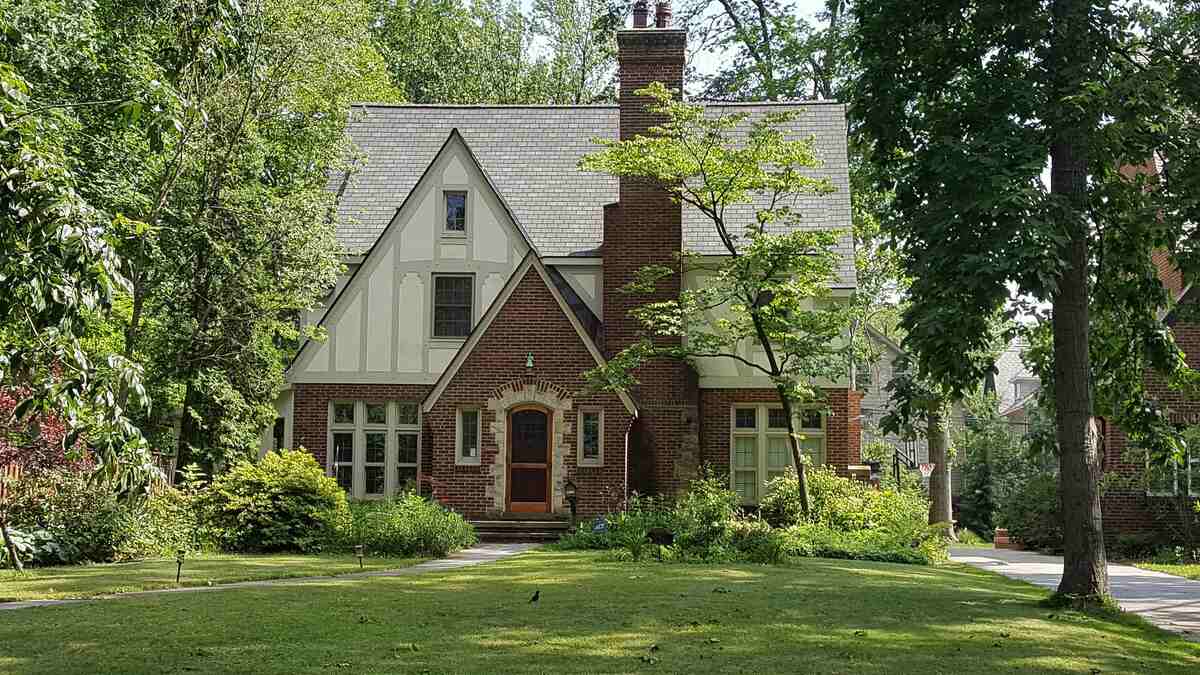
Oh, “Sweet days of summer, when July is dressed up and playing her tune!”* While a summer breeze might be pleasant to us, your cool-season lawn doesn’t feel the same: the heat can make your lawn wilt from bright green to a dried-up brown. But we’ve got you covered: Here are the best nine lawn care tips to keep your lawn healthy and green all summer long in Cleveland.
1. Choose the Best Grass Type

Aaron J. Patton, Ph.D. / Turfgrass Extension Specialist at Purdue University
Good lawn care starts by choosing the best grass type for your region. The best grass types for Cleveland lawns are cool-season grasses.
Contrary to what the name may lead you to believe, they weren’t popular in high school. These grasses are called cool-season because of their growing habits: They thrive in low temperatures and reach their peak growth rate during fall. This means that during summer, they enter their dormancy stage.
The most popular grass types for Cleveland are:
- Kentucky bluegrass: This grass type has dense and bluish-green foliage, but low shade tolerance. It is considered a high-maintenance turf.
- Perennial ryegrass: If you want a quick-establishing lawn, this is the one. It also has very good foot traffic tolerance, perfect for homes with kids and pets.
- Tall fescue: A good alternative to Kentucky bluegrass if you are looking for more drought resistance and fewer maintenance requirements.
- Fine fescue: If your lawn area gets a lot of shade, a fine fescue species might adapt well to your lawn. It also has low irrigation needs, but a higher sensitivity to foot traffic.
2. Keep a Good Watering Routine
Something as basic as watering properly is crucial to maintaining your lawn during summer. Overwatering can cause fungi and diseases, whereas not watering enough might lead to stress.
Lawns in Cleveland are composed of cool-season grasses. This means that while you are enjoying the Ohio summertime, they are taking a nap. They have entered their dormant stage to conserve much-needed energy. However, dormancy is optional. You can keep cool-season grasses green and growing by watering weekly.
Follow these watering tips for a healthy, well-watered lawn:
- Water deeply and infrequently: Cool-season grasses need around 1 to 1.5 inches of water per week. Watering deeply will encourage the grass roots to grow deeper and help the grass become more drought-resistant.
- Water in the morning: Irrigate between 4 a.m. and 8 a.m. to give the grass enough time to absorb the water before the sun gets too hot. Watering in the evening, with the humid weather and extended wet period, makes your grass vulnerable to fungi and disease.
- Avoid overwatering: This can cause shallow roots and an increased risk of disease. To avoid this, water only at the first signs of wilt — a gray-blue hue or color, folding leaves, and footprints that stay visible on the ground.
Pro tip: Check that the soil is sufficiently watered. You can use a trowel to see if the soil is wet to a 6-inch depth. You can also measure your sprinkler output by doing a sprinkler audit. Simply place cups across the lawn until they fill to a depth of 1 inch.
3. Mow the Right Way
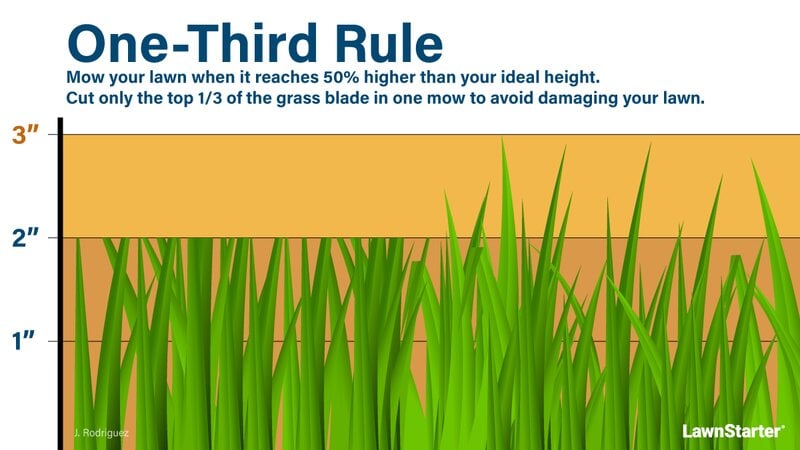
You wouldn’t think that mowing the right way was a big issue, but mowing the wrong way (cutting the grass too short or mowing too frequently) can cause your lawn to become scorched. This is especially harmful when lawns are dormant, and therefore, can’t recover properly from damage. Here are some tips to ensure you’re mowing properly:
- Mow at the right time: Either mid-morning or late afternoon is the best time to mow your lawn.
- Follow the one-third rule: Never cut more than one-third of the grass at once.
- Keep the mower blades sharp: Mowing with a dull blade will tear the grass leaf, making it vulnerable to diseases.
- Mow less frequently: Because their growth rate is impaired in the summer, cool-season grasses should be mowed every 7-10 days during this season.
- Mow at the right height: Follow your grass type’s recommended mowing height to avoid scalping
| Grass Type | Recommended Mowing Height |
| Kentucky bluegrass | 2.5 to 3 inches |
| Perennial ryegrass | 2.5 to 3 inches |
| Tall fescue | 2.5 to 4 inches |
| Fine fescue | 2.5 to 3 inches |
Pro tip: Use the grass clippings as organic mulch. Doing so will insulate the soil, helping your grass to endure the summer heat.
4. Treat Lawn Diseases
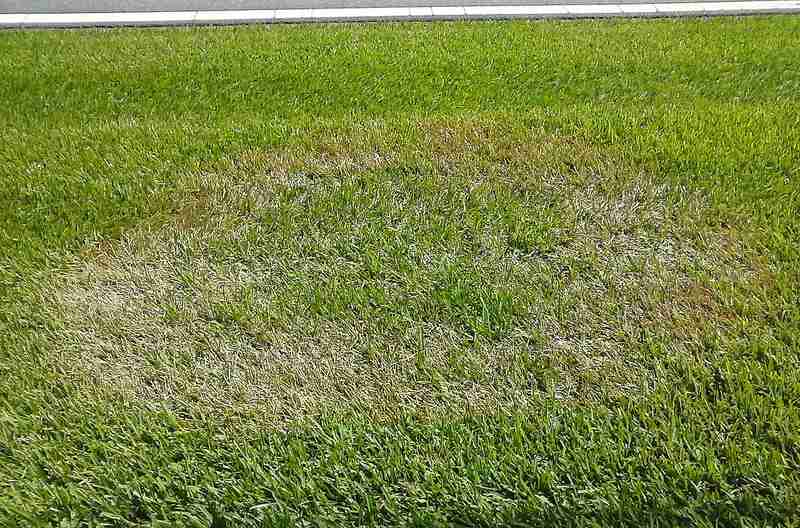
Photo Credit: Scot Nelson / Wikimedia Commons / CC0 1.0
If you suspect some fungi might be creeping into your lawn, be attentive to these signs:
- Dead patches of grass or the appearance of brown spots
- Thinning patches of grass
- Visible mushrooms or mold growth
If you notice any of these signs or see weird brown patches on the grass, the most important step is correctly identifying what disease is affecting your lawn. When in doubt, contact a pro. The wrong fungicide treatment can further damage your lawn instead of helping it.
The best defense against lawn diseases is a strong, healthy lawn. Here are some overall recommendations when dealing with lawn diseases:
- Avoid watering at night to prevent excess moisture (which diseases love).
- Do not mow when an infection is active, it can further spread the fungus.
- Only use fungicide when the hot weather has passed and the summer days are mild.
5. Avoid Foot Traffic
By summer, your cool-season lawn can start to show signs of wear and tear in the traffic pathways. So why not prevent damage while also adding a landscaping element to your yard?
Construct a walkway with stepping stones! Let’s show you why this is a good idea:
- Low-cost: Stepping stones are a budget-friendly material.
- DIY: You can easily assemble it yourself to match your sense of style.
- Protection: It prevents foot traffic from damaging your dormant grass and your shoes from getting dirty.
- Beauty: Adding a pathway is a creative element that adds ease to the eye and increases your home’s curb appeal.
6. Keep Weeds Under Control
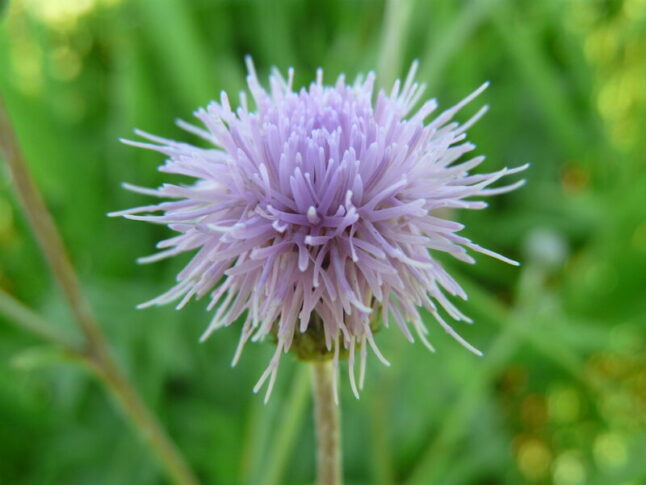
Summer weeds such as crabgrass and thistle are very common nuisances for Cleveland lawns. They compete with your grass for resources (which are much needed during dormancy), so getting control of weeds is essential:
- To prevent weeds from sprouting during summer, apply a pre-emergent herbicide in late spring, when soil temperatures are around 55 degrees.
- To fight weeds that have already grown, you can use post-emergent herbicides, which will kill weeds without harming your lawn (if applied correctly). Apply when the air temperature is 80 degrees or below.
7. Get Rid of Pests
The summer heat and humidity can make your grass a perfect habitat for lawn pests. Some of the most bothersome for homeowners are:
- Bluegrass Billbug
Once you’ve identified the little invaders, it’s time to get rid of them. Dealing with lawn pests will depend on the specific type of pest that is affecting your lawn, but there’s a general procedure you can follow to make sure they don’t come back:
- Identify the pest: This can be done by examining the damaged areas and looking for signs of the pest. Common symptoms of pests include sod that pulls up easily, brown or discolored areas, or thinning grass. Identifying the pest is important because this will determine the right treatment for your case.
- Determine the extent of the damage: Once you have identified the pest, you will need to assess the extent of the damage. This will also help you determine the best course of action.
- Choose the appropriate treatment: Depending on the type of pest and the extent of the damage, you may need to use chemical or non-chemical treatments (you can even invest in natural solutions). Consult with a local lawn care professional or Extension service for the best recommendations.
- Implement preventative measures: Once you have treated the pest, you will need to take steps to prevent it from returning. This may include improving the health of your lawn, adjusting your watering and fertilization practices, and maintaining the proper mowing height.
- Monitor the situation: Keep an eye on your lawn to make sure the treatment is effective and the pests are not returning. If the problem persists, you may need to adjust your treatment plan or seek professional help.
8. Overseed
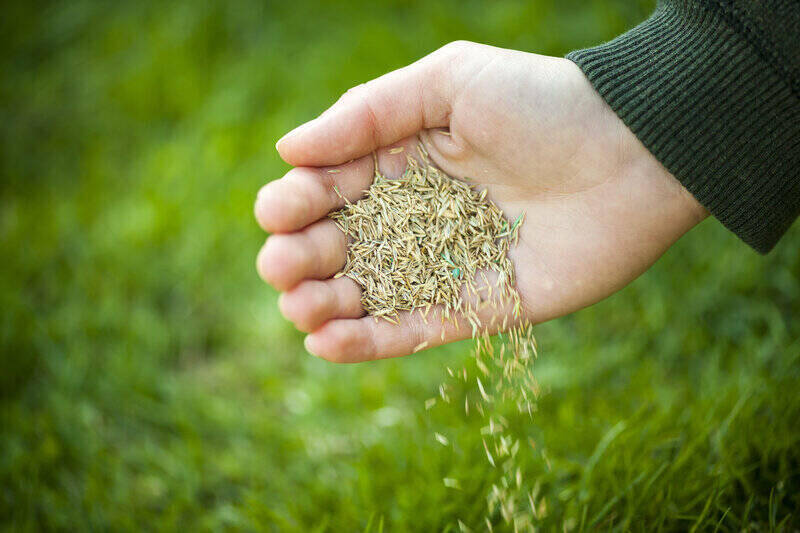
Late summer can actually be a viable season for overseeding cool-season grass, although the optimal time for overseeding this grass type is during fall. The best time to overseed Ohio lawns is between August 15 and September 15. When overseeding, follow these tips:
- Mow the lawn at the shorter end of the recommended mowing height.
- Rake the lawn before applying the seeds to increase the contact with the soil.
- Check the soil temperature with a soil thermometer. It should be between 50 and 65 degrees when you overseed.
Each fall, the area can be reseeded to thicken the lawn for the following year. It will help to repair any damage which was caused by the summer traffic.
9. Fertilize
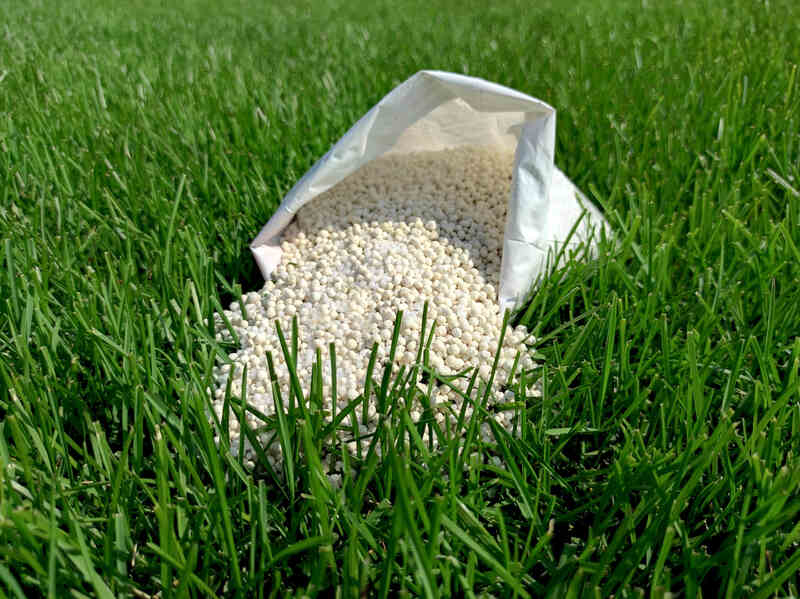
It is not advisable to fertilize Cleveland lawns during early summer since most of them are made of cool-season grasses. During this period, when the grass is vulnerable, fertilizing can:
- Stimulate top growth, causing shallow roots that won’t survive the heat
- Cause dead patches of grass to appear in your lawn.
You can, however, apply a nitrogen fertilizer by the end of the summer season, in late August, as the fall approaches. Generally, the recommendation is to fertilize your lawn in Ohio up to four times a year with 1 lb. of nitrogen per 1,000 square feet. But if you plan on doing a single application per year, do it in the fall.
The best time to fertilize cool-season grasses is the fall because:
- Optimal weather conditions: Temperatures are cooler, and there is typically more moisture in the soil due to increased rainfall. These conditions are ideal for promoting root growth, which helps grass plants absorb and utilize nutrients from fertilizer more efficiently.
- Recovery from summer stress: Fertilizing in the fall helps the lawn recover from this stress and prepares it for winter dormancy.
- Enhanced storage of nutrients: Fertilizing in the fall allows the grass plants to store essential nutrients such as nitrogen, phosphorus, and potassium in their root systems. These nutrients will be used by the plant during the winter and early spring to promote healthy growth.
- Reduced risk of weed growth: Weeds are less active during the cooler months. Applying fertilizer in the fall also helps the lawn grow denser, which can help prevent weed growth by shading out potential weed seedlings.
Pro tip: It’s also important to choose a fertilizer that is appropriate for your specific grass type and soil conditions. Always follow recommended application rates and timing, information that is usually available on product labels.
Extra super-duper important tip: To understand your soil needs and what type of fertilizer will actually help your lawn, conduct a soil test.
FAQ
Not if you’re dealing with cool-season grasses. Aeration should be done when the grass is at its peak growth, which means fall for this grass type.
Similarly to the aeration process, summer is not the best time for dethatching cool-season grasses. During the dormancy stage, the grass is using its resources to push through the summer, so any type of aggressive procedure should be avoided. Dethatch cool-season lawns during fall.
Cleveland, OH, is in the USDA hardiness zone 6. Because it is located in Northeast Ohio, by Lake Erie, humidity is present the entire summer.
Make your lawn a Summer Breeze!
By following our tips, the summer breeze will certainly make your Ohio lawn feel fine. But in case you find yourself with jasmine in your mind, just remember we have the best lawn care professionals for the Cleveland area. Don’t hesitate to contact us!
*Summer Breeze by Seals & Crofts
Main Image Credit: Cleveland Heights Ohio / Tim Evanson / Flickr / CC BY-SA 2.0